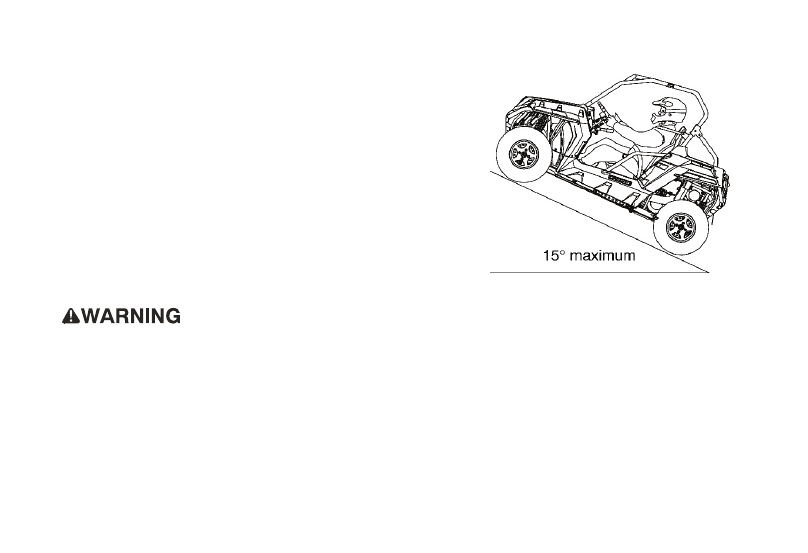CFMoto UTV Terracross CF500-6 4x4. Service Manual - part 5

-62-
Driving Uphill
Whenever traveling
uphill, follow these
precautions:
1.
Drive straight
uphill.
2.
Proceed at a steady
rate of speed and
throttle opening.
Avoid unnecessary
changes in speed or
direction.
3.
Avoid steep hills
(15°
maximum).
NOTE:
If ascending a steeper grade is unavoidable,
engage all-wheel drive
before ascending.
4.
If the vehicle stalls while climbing a hill,
apply the brakes. Place the
transmission in reverse
and slowly allow the vehicle to roll straight
downhill
while applying light brake pressure to control speed.
Climbing hills improperly can cause loss of control or vehicle overturn.
Always check the terrain carefully
before climbing a hill.
Braking and handling are greatly affected when operating in hilly terrain.Improper operating procedures could
cause loss of control or overturn and
result in serious injury or death.
Avoid climbing steep hills (15
°
maximum).
Use extreme caution when operating on hills, and follow proper operating
procedures outlined in the owner's
manual.
Never climb hills with excessively slippery or loose surfaces.
Never open the throttle suddenly.
Never go over the crest of a hill at high speed. An obstacle, a sharp drop, or
another vehicle or person could
be on the other side of the hill.